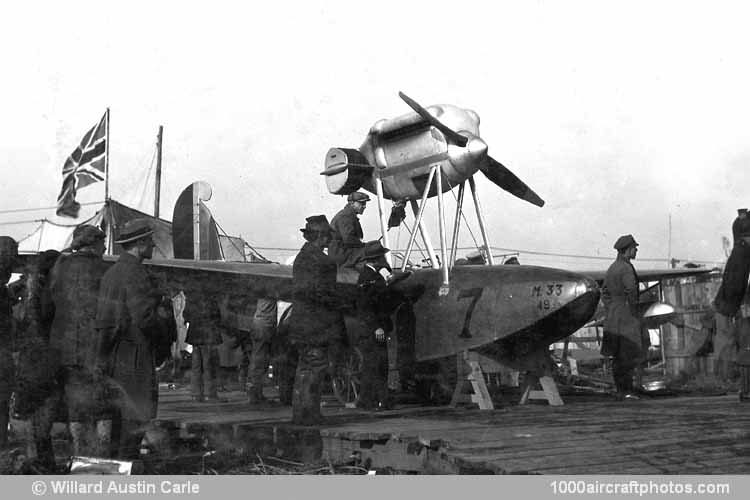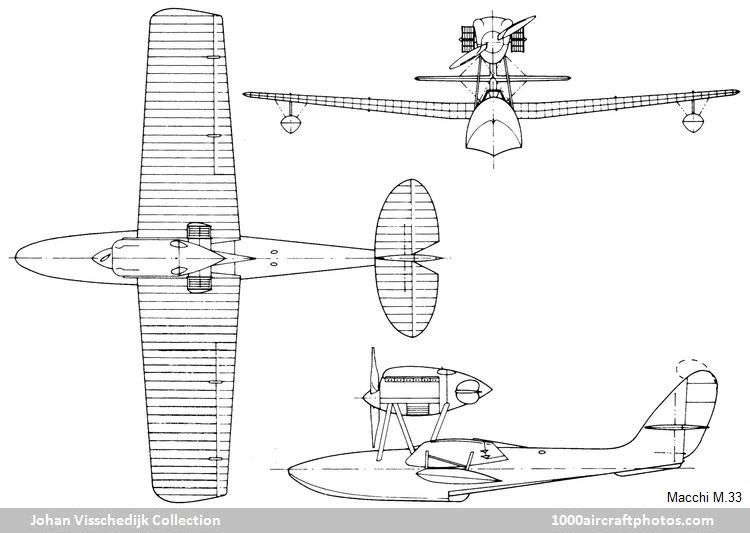04/30/2012. Remarks by Johan Visschedijk: "Sadly, political influences in sport were apparent in Italy's Schneider contest endeavors during 1925. Then, Mussolini's Government, professing to be sponsoring Italian participation, limited its support to providing two Curtiss D-12A engines, purchased from the US in the previous year. Even these had spent many hours on Fiat's test beds and were unable to produce their full rated power output. Thus the Macchi company bore the cost and responsibility for Italy's attendance at the Baltimore contest.
To match the potential performance of the new Curtiss racers, Mario Castoldi, Macchi's chief designer, conceived the design of a sleek cantilever monoplane flying boat, his first racer for his company. While at first sight it appeared much like earlier Macchi biplane racers with the upper mainplane removed, it was more than that. The slim hull had a very flat planing bottom, a single step well forward with a long rear section terminating in a graceful swept-up fin and rudder. Initially the rudder was unbalanced but later was modified to embody a balancing surface forward of the hinge line.
The open cockpit had a streamlined headrest and was located above the mainplane. The two-spar wooden mainplane had a relatively thick 16% thickness/chord ratio of bi-convex symmetrical section. It was built in three sections: a center section built integral with the hull, and two long outer panels. Small teardrop stabilizing floats were strut mounted and wire-braced below the mainplane. Long-span narrow-chord ailerons occupied two-thirds of the trailing edge.
The alleged 500 hp Curtiss D-12A twelve-cylinder liquid-cooled V-engine was mounted high above the hull on a pair of N-struts and was enclosed in a neat streamlined nacelle, the lines of which were spoiled by two large plate-type radiators mounted at the rear of the nacelle. An oil-cooler was fitted flush with the nacelle undersurface. It drove a 7 ft 6 in (2.28 m) diameter two-blade propeller.
Three M.33s were built at Varese; two were flying examples (MM48, MM49) and the third was for structural test work. Flight testing took place on Lake Maggiore where a 31 mls (50 km) race circuit was set out. Riccardo Morselli and Giovanni de Briganti, the Macchi test pilots, achieved speeds of nearly 199 mph (320 kmh) in the M.33s but they had some misgivings about the cantilever mainplane and found that the tired engines misfired and needed careful handling.
At Baltimore these engine problems again proved almost insurmountable during practice flying and the navigability trials. Some dedicated work by the engineers got both aircraft serviceable for the contest day but a faulty ignition system prevented Morselli from starting MM48's engine and this aircraft was withdrawn. De Briganti was placed third in the contest. Both aircraft were later used for training at Italy's school for high-speed flying."

